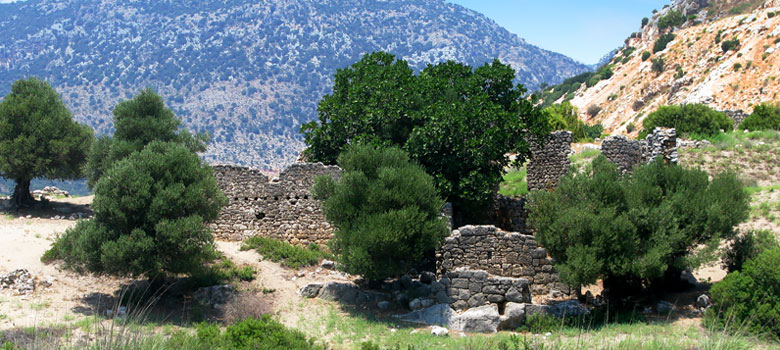Ancient sites in Turkey: accessible archaeology
- By Simpson Travel
- 02 Sep 2019
- What to do
The literal and figurative bridge between Europe and Asia, Turkey has been at the heart of successive empires throughout history. Thanks to a friendly climate and a lack of large-scale development, there are still extensive traces of these ancient civilisations around the country.
In fact it is impossible to travel far without coming across a sliver of the past: a fluted column built into a house; a ruined arch in an olive grove, a great carved stone sarcophagus in the middle of a street, a slab of inscription or a patch of mosaic, incongruous in a wide empty field. Perhaps the most tantalising treasures of all are the arches, columns or steps of long-vanished buildings, now visible on the sea bed through the coast’s famously clear, blue sea.
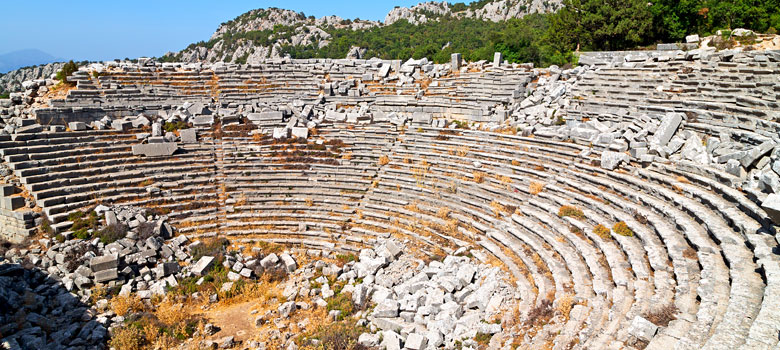
Patara
One of the most atmospheric places to visit is Patara, not far from Kalkan. The whole area is a national park so there is no development, just some excellent swimming off Patara’s wonderful 12- kilometre beach. This was once a great coastal city and the Emperor Hadrian built a fine granary here, yet nature proved stronger even than the Roman Empire. Attacks by pirates reduced the city to a village then, slowly, the sand blew in and filled the harbours, till eventually all that remained in sight were a few fragments emerging from the dunes.
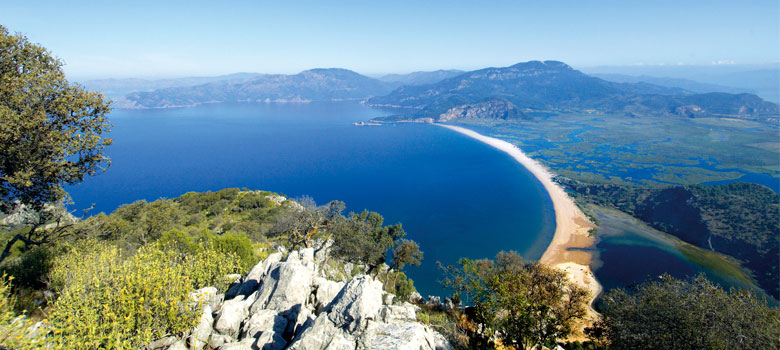
Dalyan’s rock tombs
Another city devoured by time is, or was, Caunos, on the Dalyan estuary. The area around the Dalyan is visually, environmentally and historically unique. Upstream, the river emerges into the vast Lake Koyecegiz, downstream the delta becomes a web of waterways running from the river towards the perfect sandy arc of Iztuzu beach. Damselflies and kingfishers flash brilliantly through the reeds. Egrets, herons, short-toed eagles and warblers all form part of the diverse birdlife, and this is one of the places where a loggerhead turtle may suddenly loom up close to your boat. But dominating all this is the great cliff that forms the necropolis – the 5th century BC tombs of Caunos. Even in this country of marvels, nothing prepares you for the sight of the elaborately carved portals and the glowing red stone, particularly magnificent at sunset.
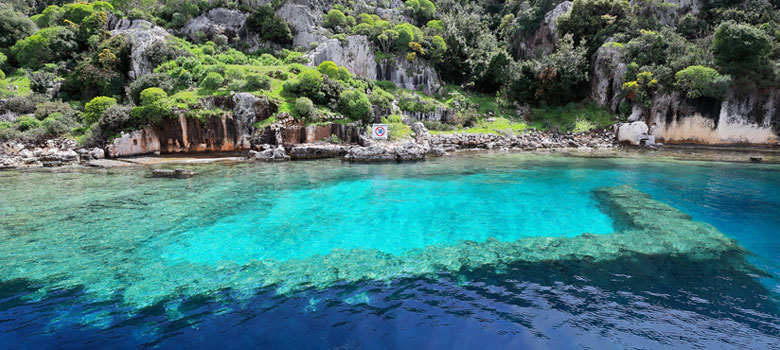
Sunken Kekova
Of course, there are many smaller yet equally evocative sites. Take a boat from Kekova or Simene to peer at the sunken ruins and carved sarcophagi stranded like strange stone ships in the bay. At Sidyma, between Fethiye and Kalkan, a village has grown up between the ruins, and antique stones from the city have been reused to construct simple cottages. At Cynae, between Kas and Finike, there are over three hundred carved tombs scattered on its breezy hillside, startlingly personal remnants of a city abandoned some thousand years ago.
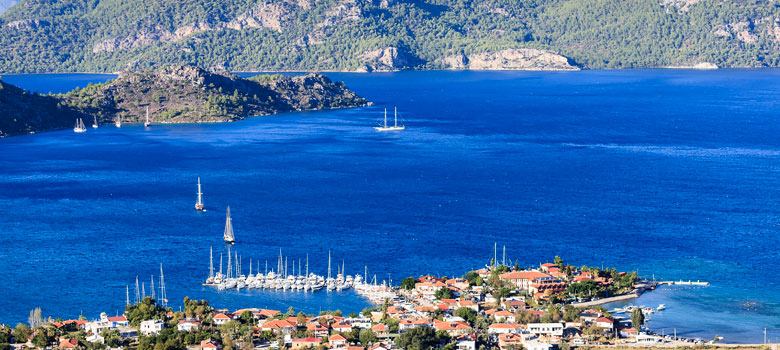
Bozburun Peninsula
If you find yourself towards the eastern end of Turkey’s incredible southern coast you’ll come across more small sites that are off the main tourist radar, and perhaps all the more worthwhile visiting.
Hidden in the gentle, forest-clad slopes around the Bozburun peninsula lie the ruins of Knidos, Amos and Loryma. The stone walls of Loryma’s citadel are still in remarkable condition, reaching up to 8m on one side and commanding impressive views over Bozukkale (‘ruined fortress’) Bay. Also on the sleepy Bozburun peninsula is Selimye, a settlement since the Byzantine Empire. The pretty village curls around a horseshoe-shaped bay and still has the ruins of Hydas and the remains of city walls dating from the Hellenistic period.
Andriake, Demre
Andriake has always been one of the less visited sites in the area, but expect that to change with the opening of the Lycian Civilizations Museum which is housed in the colossal, 2nd-century Granarium. Opened in 2016, the museum is home to over 1,000 historical artefacts collected at Lycian sites including Myra, Andriake, Patara, Xanthos, Tlos, Arycanda and Olympos. There's a great focus on every day objects such as kitchen items, jewellery, household pots and glass, with animations depicting daily life as it was lived in the ancient city of Andriake. There's also a huge Open Air Museum at Andriake, where you can wander the remains of churches, workshops, a Jewish temple and various other monuments. A really memorable day out for just five Turkish Lira.
